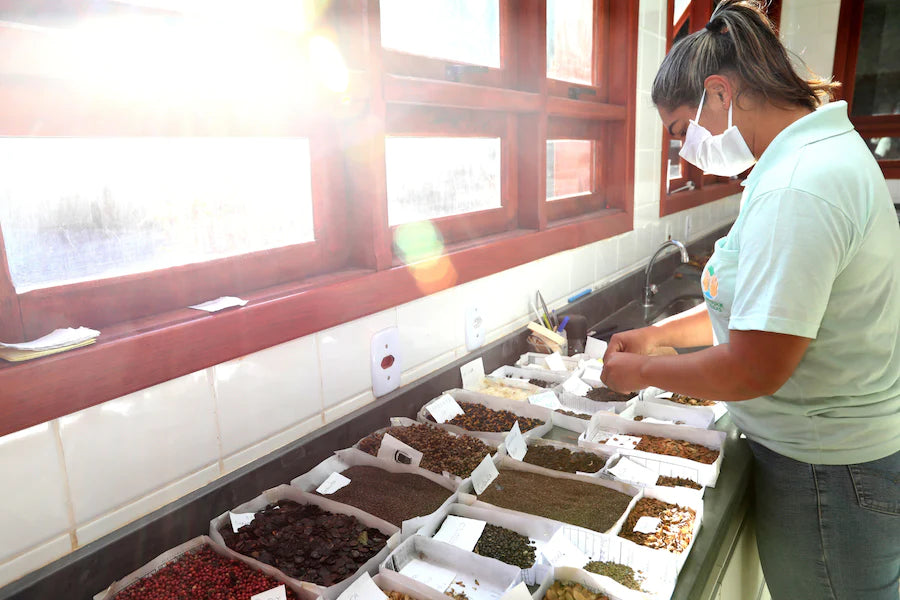Plant Trees

Support Global Reforestation! Plant trees where they’re needed most: Plant trees
About
Stay up to date on major announcements, exciting collaborations, and more.Visit our Newsroom
We make it simple for anyone to plant trees, and together we can make an incredible impact. Learn more

Stay up to date on major announcements, exciting collaborations, and more.Visit our Newsroom

We make it simple for anyone to plant trees, and together we can make an incredible impact. Learn more
Get Involved
Become a business partner to improve your company’s sustainability initiatives and make an impact. Learn more
See how your support and leadership can help us fund reforestation efforts across the globe. Learn more

Become a business partner to improve your company’s sustainability initiatives and make an impact. Learn more

See how your support and leadership can help us fund reforestation efforts across the globe. Learn more
Learn
Read about stories from the field, interesting facts about trees and get your healthy dose of nature. Visit our blog
Comprised of lesson plans, learning modules, resources, and activities, our T.R.E.E.S. School Program is the perfect addition to your curriculum. Learn more

Read about stories from the field, interesting facts about trees and get your healthy dose of nature. Visit our blog

Comprised of lesson plans, learning modules, resources, and activities, our T.R.E.E.S. School Program is the perfect addition to your curriculum. Learn more
Shop
Our fan-favorite Reforestation T-Shirt. Wear it with pride to show your support of reforesting our planet, one tree at a time. Shop now
Give the gift that lasts a lifetime! Choose an image, write your personalized message and select a delivery date to gift a tree. Gift a tree

Our fan-favorite Reforestation T-Shirt. Wear it with pride to show your support of reforesting our planet, one tree at a time. Shop now

Give the gift that lasts a lifetime! Choose an image, write your personalized message and select a delivery date to gift a tree. Gift a tree
Get Involved
Plant Trees
Enhancing Climate Change Resilience of Ecological Restoration

Get news, updates, & event Info delivered right to your inbox:
Climate Change Resilience and Reforestation
The UN Decade of Ecosystem Restoration is upon us, and as governments meet to decide the future of biodiversity in the wake of COP26, reforestation is at the forefront of the global conscience. Conservation, restoration and improved land management have enormous potential in many countries to cost-effectively mitigate climate change— and bring myriad other social and environmental benefits, including climate resilience, poverty alleviation, improved soils and enhanced biodiversity.
However, 1°C of global warming is already baked into the climate system and is affecting the long-term permanence and success of reforestation projects. Increases in temperature, drought, fires and pest outbreaks are negatively impacting tree growth and carbon storage. Additionally, planting the wrong tree in the wrong place (e.g. exotic monocultures) is exacerbating climate change impacts in some areas.
To meet global reforestation targets and ensure long-term success, we need to account for climate change in the design and implementation of reforestation projects. This involves asking pointed questions about current reforestation practices. For example, how can we increase the likelihood that different types of tree species will be able to adapt to climate change? What role will novel ecosystems play in maintaining future global biodiversity? And is restoring an ecosystem to a historic state still a viable end goal in a changing climate?
The Framework
A team of people from the UN Environment Program World Conservation Monitoring Centre (UNEP-WCMC) brought these and other important questions into a framework, comprehensively outlining seven areas where reforestation needs to be adapted to climate change.

1. Consider climate change uncertainties when setting reforestation objectives
With all reforestation projects, there's a need to set Specific, Measurable, Achievable, Realistic and Time-bound (SMART) objectives. Often, projects use historic conditions to set these objectives and measure success.
However, as the climate changes, there's great uncertainty about what a future ecosystem will look like. Objectives therefore need to be adaptive and focused on the resilience of specific ecosystem functions — such as pollination, water quality or biodiversity.
For example, at the UK's Mayesbrook Climate Change Park, 45 hectares were restored with the primary objective of helping a community adapt to flooding risk, exemplifying how urban green space could provide key ecosystem services.

2. Select sites based on understanding of projected changes to climate
The suitability of sites for reforestation will change as environmental conditions alter, as species move to avoid climate impacts, and as the intensity of drought, storms and floods worsens.
When identifying potential sites, it's important to consider the anticipated climatic changes in that area. This includes the response of species, their vulnerability and exposure to threats, and the space available for them to move.
For example, in Brazil's Atlantic Forest, extensive work has been completed to select restoration sites based on modeling of climate change, land use change and socio-economic factors. Furthermore, in order to increase the probability of achieving positive outcomes, reducing the drivers of habitat degradation is imperative before commencing reforestation.

3. Account for future distribution and fitness when choosing target species and ecosystems
The projected impacts of climate change will force us to ask difficult questions about which species to choose for reforestation and which ecosystems we wish to regenerate. In extreme cases, reforestation may need to consider replacing native species that are vulnerable to climate change with non-native species that are able to fulfill the same ecosystem function. Sourcing seed from adjacent to project sites or using local material may no longer be adequate in many regions, as it could be poorly adapted to future climates.
Instead, at least part of the material for reforestation may need to be sourced from plants that are already adapted, and able to survive extreme drought, wildfires, increased temperatures and reduced rainfall. Existing strategies such as climate adjusted provenance can aid practitioners to better select stock that is able to survive climate change.

4. (Re)establish or manipulate key ecosystem interactions and micro-climatic niches
Climatic changes have the potential to significantly impact the functioning of ecosystems. For example, in some areas, we're already seeing a mismatch between plant flowering events and the emergence or arrival of key pollinators like birds, butterflies and bees. Reforestation will need to consider when and where the loss of critical species interactions and ecosystem functions may occur in the future. Extreme measures like engineering approaches or species reintroductions may be required to fill the roles of keystone species lost due to climate change impacts like floods and wildfires.
The Vietnamese Coastal Wetlands Protection and Development Project (CWPDP) utilized both physical manipulation and species selection when restoring mangrove forests in southern Vietnam: plantations were specifically designed to be species-rich, providing genetic variety. Building dykes and bamboo fences also allowed for the natural rehabilitation of mangroves, in areas impacted by sea level rise.

5. Identify and mitigate for site-level climate change risks
Many threats to natural environments are directly related to climate change, including more intense and frequent extreme weather events and increasing sea surface temperatures. Other threats are the result of tangible human actions like increased nutrient input from agriculture — and still others are the result of direct actions that are further exacerbated by climate change, including invasive species, pests and the spread of disease.
For instance, Whitebark pine forests have suffered major declines as a result of outbreaks of mountain pine beetle and the exotic disease white pine blister rust. Projected future warming and drying may increase the distribution of these outbreaks, further exacerbating Whitebark pine decline and compromising the success of restoration. Planting rust-resistant Whitebark pine seedlings is one recommended mitigation measure being investigated to combat this trend.
These global hazards can have local, site-specific impacts and must be considered during planning to enhance the resilience of restoration projects. While certain risks may be minimized using the approaches outlined elsewhere in this framework, some might be difficult to abate. Potential impacts should be anticipated and mitigated within the design and implementation of each project.

6. Align project with long-term policies, seeking synergies across multiple objectives
Policies, land use and Indigenous Communities and Local People (IPLCs) may be affected by climate change in ways which influence the feasibility of reforestation. Reforestation may be incentivized by climate change policies and mechanisms (e.g. carbon offset markets), but in some cases discouraged, as when increased demand for biofuels raises competition for land.
Understanding how climate change will impact stakeholders and alter land management is key to reforestation success. Adoption of Free, Prior and Informed Consent (FPIC) and clear legal right is critical to ensure that projects align with long-term socioeconomic outcomes.
Collaboration will be key to working across landscapes and achieving multiple objectives. The Atlantic Forest Restoration Pact is a collection of the efforts of many smaller organizations to restore parts of the Atlantic Forest in Brazil. Included the Pact is a covenant where signatories define their priorities, including sharing knowledge on forest restoration, providing advice to align restoration actions, and contributing to public policy. Through this Pact, smaller local restoration projects create greater impact by aligning their actions.

7. Design a monitoring framework that enables adaptive management of the restoration trajectory
In a rapidly changing climate, reforestation management decisions may be valid for only short time periods. For this reason, monitoring and adaptive management of restoration projects is key to ensuring their success. This requires clearly stated, attainable objectives supported by appropriate indicators, sufficient monitoring resources, and solid implementation plans.
At the Stewart Lake Waterfowl Management Area in northeastern Utah, restoration work aimed to reduce hazardous selenium contamination by careful water inflow/outflow control. This was sensitive to decreased river flow and increased risk of drought, as predicted by climate change models. The management was designed to be adaptive. Data collected from monitoring water, sediment, plankton and fish selenium levels were used at regular stakeholder meetings to evaluate and refine the restoration strategy.
In the face of widespread climate change impacts on ecosystems, some deeply embedded tenets of reforestation practice break down. For example, the idea that local populations provide the best planting material, that natural regeneration is the best approach, and that management decisions are valid for decades to centuries. Upscaling climate change resilience demands challenging these tenets and replacing them with evidence-based approaches that are fit to meet future change and uncertainty. The seven-step framework, described above can be used as a checklist for practitioners that can help assess and build the resilience of their projects from inception to completion.
One Tree Planted is actively working across its portfolio of projects to build climate change into reforestation decision-making. This will ensure that trees planted today will have the best chance of surviving well in to the future. Want to make a difference for the planet? Plant a tree today!
Get news, updates, & event Info delivered right to your inbox:
Related Posts
Why Healthy Forests are Critical for Biodiversity
16/05/2024 by Meaghan Weeden
10 Ways to Prevent Forest Fires
14/05/2024 by Meaghan Weeden
12 Ways to Prevent Biodiversity Loss
09/05/2024 by One Tree Planted
Popular On One Tree Planted
5 Causes of Deforestation
15/02/2024 by Meaghan Weeden
Inspirational Quotes About Trees
23/01/2024 by Meaghan Weeden
How to Reduce Waste: 21 Ideas for Zero Waste Living
16/01/2024 by Meaghan Weeden





